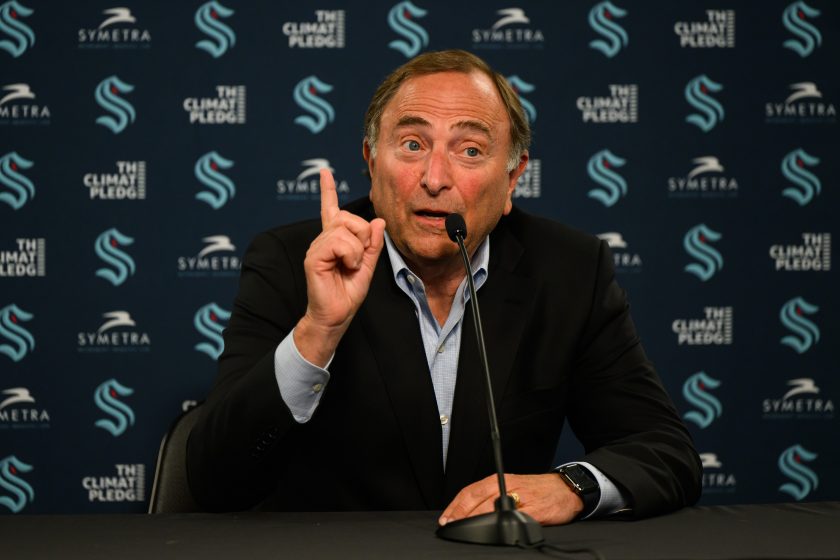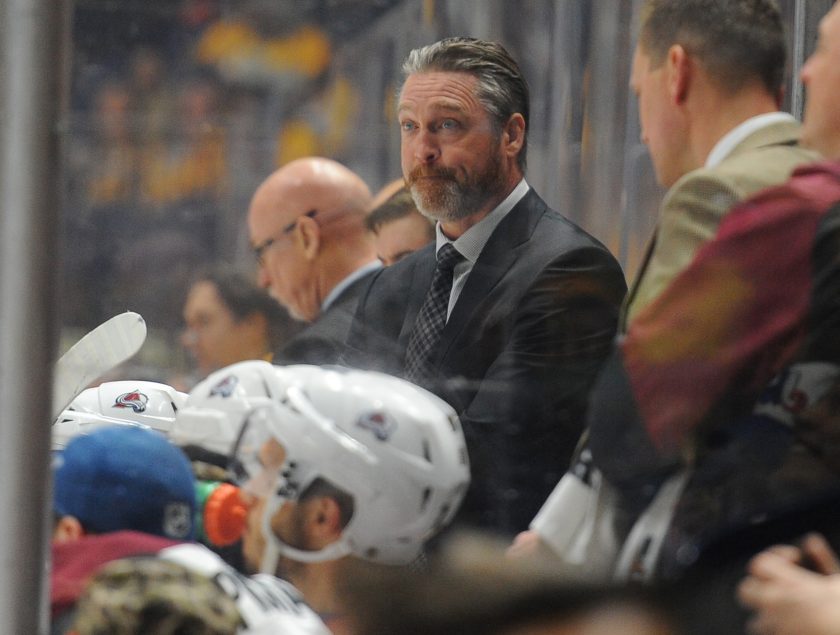The rebuilding New York Rangers: How we got here

The Garden Party with Jason Bisnoff details just how the rebuilding New York Rangers got to the current point they’re dealing with.
[sc name=”Garden Party Banner” ]The New York Rangers are in a rebuild, for those of you that have been living under a rock for the more than eight months since the 2017-18 National Hockey League trade deadline. There is plenty of New York media that has covered it, this site and myself included, so I will avoid the long breakdown, but basically it comes down to the team having a longer road ahead to the finals than the four years since the Rangers lost in five games to the Los Angeles Kings.
It can be said that the only element of the Rangers set to win now is between the pipes, Henrik Lundqvist. Across the rest of the roster, there are new, young faces and let’s take a look at how we got here.
[sc name=”Rangers Title” text=” After the Lockout, a Goalie is Found” ]In 2004-05, the NHL season was canceled due to a lockout (and the incompetence of Gary Bettman). Thirty games into the new season, the Rangers goalie, Kevin Weekes, was injured due to the net falling on him and backup Henrik Lundqvist came in.
The rest is hall of fame-bound history.
Powered by an older veteran roster and the ageless Jaromir Jagr, the team made the playoffs four years in a row, but rarely threatened to go very far. After the departure of Jagr and disappointing signings of Scott Gomez, Chris Drury and Wade Redden, the playoff streak ended in 2009-10 with a loss to the Flyers on the last day of the season eliminating the Blueshirts.
[sc name=”Rangers Title” text=”Building Within, with some help from Slovakia” ]Following a season where they missed the playoffs, the Rangers still had the top prize in free agency from a year ago in forward Marian Gaborik. They were able to return to the playoffs in 2010-11 and a big difference between this playoff team and teams of past was that four of the top five scorers were drafted by the Rangers, Brandon Dubinsky, Ryan Callahan, Derek Stepan and Artem Anisimov.
This was the result of a concerted effort to have more homegrown talent and fewer veteran signings. The team did sign a big name in Brad Richards and in the 2011-12 season, Richards and Gaborik were the only players in the top-10 in scoring on the team to have played anywhere in the NHL besides for the Rangers.
The team had managed to build through the draft and reached the conference finals for the first time since 1996-97. This may just be a blueprint for what the team is looking to do now, a useful exercise in looking to the past.
[sc name=”Rangers Title” text=”Wheeling and Dealing with Columbus” ]Trying to build on the core of Lundqvist, Callahan, Stepan and Gaborik, along with defense from Marc Staal, Ryan McDonagh and Dan Girardi, the team, prior to the 2012-13 season, shipped Brandon Dubinsky, Artem Anisimov, a prospect and a 2013 first-round pick to the Columbus Blue Jackets for Rick Nash.
The two-star approach with Nash and Gaborik was short-lived and once again it was Columbus with who the Rangers found a draft partner. At the beginning of what would become a trend, the Blueshirts were active at the trade deadline moving Gaborik for a package that centered around Derick Brassard. That season would end in the second round of the playoffs.
[sc name=”Rangers Title” text=”All-In for Win Now” ]Starting the 2013-14 season, the Rangers were at the point of thinking Cup-or-bust with Henrik Lundqvist in his prime and a solid top-to-bottom roster. With the emergence of late bloomer Mats Zuccarello, the aforementioned draft picks, Carl Hagelin and Chris Kreider, the team was strong start-to-finish, not as top-heavy as previous teams and getting scoring up and down the roster.
Yet again a trade deadline blockbuster was the story of the season as the Rangers went all in on win now, trading captain Ryan Callahan, whose contract negotiations had turned sour, and two first-round picks for future hall-of-famer Martin St. Louis. His signing, and later his mother’s passing, lit a spark and propelled the Rangers to the finals.
[sc name=”Rangers Center” ]Despite leading in the first two games in Los Angeles for almost all of regulation, and a bad call on goaltender interference that the league has since admitted was wrong, the Rangers fell short, 4-1.
Being so close and falling short energized the Rangers in 2014-15 when they went on to win the President’s Trophy for the first time since their last Stanley Cup season in 2013-14. They would yet again mortgage the future to go for the cup with a trade deadline deal sending Anthony Duclair, a first-round pick and a second-round pick to the Arizona Coyotes for Keith Yandle. They would fall short in game seven of the conference finals.
[sc name=”Rangers Title” text=”One Last Hurrah” ]The Rangers would still look to put the right pieces together in 2015-16 and 2016-17, treading water, but also trading draft picks for Eric Staal and Brendan Smith. Notably, they made a key transaction in that time frame trading Derick Brassard for Mika Zibanejad and a second-round pick in a lopsided deal only the Ottawa Senators would agree too.
[sc name=”Rangers Title” text=”Eyes on the Future” ]It was in the 2017 off-season when the first signs of the rebuild emerged with the trade of Stepan to Arizona for Tony DeAngelo and the first-round pick that led to Lias Andersson.
With a skid in January and February, the Rangers formally threw in the towel on that season and, in a larger sense, on a team that in various iterations came pretty close to glory. In days surrounding the trade deadline, the Rangers traded Rick Nash for a package that included Ryan Spooner and a first-round draft pick. They also traded J.T. Miller and Captain Ryan McDonagh for a package with Vladislav Namestnikov, Libor Hajek and what could be two first-round picks if the Lightning with the cup this year.
When all is said and done, the aggregate of these deals led to one of the youngest teams in hockey that is still managing to stay afloat at 5-7-1 along with five first-round picks in the past two years. How it will all shake out remains to be seen.
[sc name=”Rangers Link Next” link=”https://elitesportsny.com/2018/11/02/new-york-rangers-henrik-lundqvist-may-have-ownership-second-guessing-everything/” text=”Lundqvist May Have Ownership 2nd-Guessing Everything” ] [sc name=”Rangers Footer” ]Writer, Reporter. Telling stories that go untold. About triumph, tragedy and those who are truly bold, but mostly sports and hip-hop. RT≠Endorsement Views=Mine






